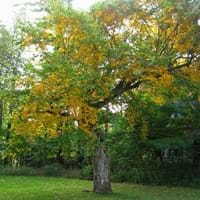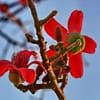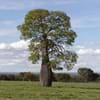Life Span
Perennial
Perennial
Origin
Northeastern United States, Mid-Atlantic United States, North-Central United States, Central United States, Canada
Europe, Turkey
Types
it is a type of birch
Not available
Habitat
Hillside, Mountain tops
hedge rows, Woodlands
USDA Hardiness Zone
4-7
2-9
AHS Heat Zone
7-1
Not Available
Sunset Zone
A3, 1a, 1b, 2a, 2b, 3a, 3b, 4, 5, 6, 7, 14, 15, 16
Not Available
Habit
Pyramidal
Upright/Erect
Flower Color
Light Yellow, Light Green
Yellow, Green, Orange Red
Flower Color Modifier
Bicolor
Bicolor
Fruit Color
Bronze, Sandy Brown
Green
Leaf Color in Spring
Green, Dark Green
Light Green
Leaf Color in Summer
Dark Green
Dark Green
Leaf Color in Fall
Yellow
Lemon yellow, Yellow green, Orange Red
Leaf Color in Winter
Not Available
Not Available
Plant Season
Spring, Summer, Fall, Winter
Summer, Fall, Winter
Sunlight
Full Sun, Partial Sun
Full Sun, Partial Sun
Type of Soil
Clay, Loam
Loam
The pH of Soil
Acidic, Neutral
Acidic, Neutral
Soil Drainage
Average
Average
Bloom Time
Early Spring
Spring
Tolerances
Not Available
Drought, Pollution, Variety of soil types
Where to Plant?
Ground
Ground
How to Plant?
Seedlings
Grafting, Seedlings
Plant Maintenance
Medium
Low
Watering Requirements
Average Water Needs, Do Not over Water
Average Water Needs, Do Not over Water, Keep the ground moist but not water-logged, Requires regular watering
In Summer
Lots of watering
Lots of watering
In Spring
Moderate
Moderate
In Winter
Average Water
Average Water
Soil pH
Acidic, Neutral
Acidic, Neutral
Soil Type
Clay, Loam
Loam
Soil Drainage Capacity
Average
Average
Sun Exposure
Full Sun, Partial Sun
Full Sun, Partial Sun
Pruning
Prune to half of its height
Cut or pinch the stems, Remove damaged leaves, Remove dead branches, Remove dead leaves
Fertilizers
All-Purpose Liquid Fertilizer, fertilize twice a year
All-Purpose Liquid Fertilizer, Nitrogen, Water soluble fertilizers
Pests and Diseases
Borers, Chlorosis
Aphids, Caterpillars, Powdery mildew
Plant Tolerance
Not Available
Drought, Pollution, Variety of soil types
Flowers
Insignificant
Insignificant
Flower Petal Number
Not Available
Not Available
Fragrant Leaf
No
Not Available
Fragrant Bark/Stem
Yes
No
Foliage Texture
Medium
Medium
Foliage Sheen
Matte
Glossy
Attracts
Not Available
Birds, Not Available
Allergy
Respiratory problems, Skin rash
Asthma, conjunctivitis, Pollen, Rhinitis
Aesthetic Uses
Landscape Designing, Showy Purposes
Cottage Garden
Beauty Benefits
Not Available
Skin irritation, Stops hair loss
Environmental Uses
Air purification, Shelter for wildlife
Air purification, Shelter for wildlife
Medicinal Uses
No Medicinal Use
Cold, Cough, Diarrhea, Hair Loss, Headache, hemorrhoids, Rheumatism, Sore throat
Part of Plant Used
Bark, Sap
Leaves
Other Uses
Edible syrup, used for making charcoal, Used for making wood alcohol, Used in Furniture
Cosmetics, Used as Ornamental plant, Used for its medicinal properties
Used As Indoor Plant
No
No
Used As Outdoor Plant
Yes
Yes
Garden Design
Feature Plant, Shade Trees
Feature Plant, Shade Trees
Botanical Name
BETULA alleghaniensis
Carpinus betulus
Common Name
Yellow Birch
Common Hornbeam, European Hornbeam
In Hindi
Yellow Birch
हानबीन
In German
Yellow Birch
Hainbuche
In French
bouleau jaune
charme
In Spanish
Abedul amarillo
carpe
In Greek
κίτρινο Birch
γαύρος
In Portuguese
κίτρινο Birch
choupo-branco
In Polish
żółte brzozy
grab
In Latin
Birch flavum
Item carpinus
Phylum
Magnoliophyta
Magnoliophyta
Class
Magnoliopsida
Magnoliopsida
Family
Betulaceae
Betulaceae
Clade
Not Available
Angiosperms, Eudicots, Rosids
Tribe
Not Available
Not Available
Subfamily
Not Available
Coryloideae
Number of Species
Not Available
Season and Care of Yellow Birch and Hornbeam
Season and care of Yellow Birch and Hornbeam is important to know. While considering everything about Yellow Birch and Hornbeam Care, growing season is an essential factor. Yellow Birch season is Spring, Summer, Fall and Winter and Hornbeam season is Spring, Summer, Fall and Winter. The type of soil for Yellow Birch is Clay, Loam and for Hornbeam is Loam while the PH of soil for Yellow Birch is Acidic, Neutral and for Hornbeam is Acidic, Neutral.
Yellow Birch and Hornbeam Physical Information
Yellow Birch and Hornbeam physical information is very important for comparison. Yellow Birch height is 1,680.00 cm and width 760.00 cm whereas Hornbeam height is 610.00 cm and width 610.00 cm. The color specification of Yellow Birch and Hornbeam are as follows:
Yellow Birch flower color: Light Yellow and Light Green
Yellow Birch leaf color: Green and Dark Green
Hornbeam flower color: Yellow, Green and Orange Red
- Hornbeam leaf color: Light Green
Care of Yellow Birch and Hornbeam
Care of Yellow Birch and Hornbeam include pruning, fertilizers, watering etc. Yellow Birch pruning is done Prune to half of its height and Hornbeam pruning is done Cut or pinch the stems, Remove damaged leaves, Remove dead branches and Remove dead leaves. In summer Yellow Birch needs Lots of watering and in winter, it needs Average Water. Whereas, in summer Hornbeam needs Lots of watering and in winter, it needs Average Water.





